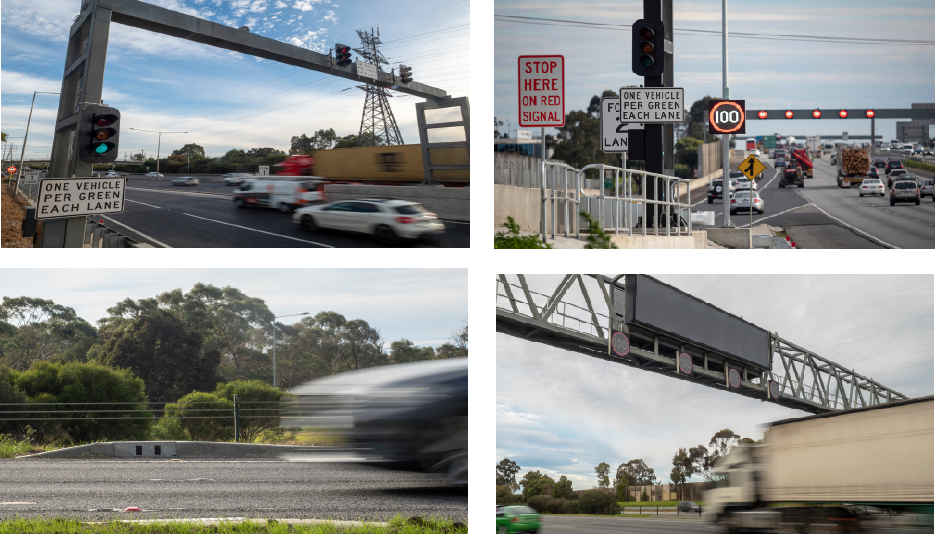Working from Fulton Hogan’s site office, SAGE designed, tested, integrated and commissioned more than 1200 ITS components. As part of this, 103 control cabinets were designed and manufactured using the highest control system standards at SAGE Automation’s Advanced Manufacturing Facility in South Australia.
A strong working relationship with Fulton Hogan allowed SAGE to deliver the ITS components alongside major civil works upgrade with no impact to delivery schedule.
Making a managed motorway: ITS technologies
1. Lane use management system (LUMS) (348 signs): alert people of traffic incidents as they happen
• Improve traffic flow by providing motorists with real-time information in the event of an incident, providing lane use advice to motorists.
2. Control cabinets (103): control all equipment and provide data back to VicRoads TMC
• The cabinets hold newly designed control equipment and are optimised for longevity and ease of maintenance.
3. Traffic detector sites (148): sensors that detect traffic conditions to manage traffic flow
• Above ground traffic sensors (TIRTLs) detect which lanes are in use as well as the number and type of vehicles on the road, and how fast and how close together they’re travelling. Meanwhile, below ground traffic sensors (STUDs) detect traffic at freeway entry and exit points.

4. CCTV cameras (28): provide live traffic surveillance for safety and incident monitoring
5. Freeway ramp signals (16): control the flow of traffic on the freeway, reducing congestion
• Signals installed at key freeway entry points improve traffic flow, reduce stop-start driving conditions, sudden braking and balance traffic entering the freeway.
• First freeway-to-freeway Ramp signal site between EastLink and VicRoads’ freeway network.
6. Variable message signs (VMS) (8): provide live travel time estimates and safety messages
• Give drivers real-time travel information such as travel times based on current traffic flow, accident notifications, road closures, lane closures, public events or safety messages.
All devices are configured to be controlled from VicRoads Traffic Management Centre (TMC) in Kew.
Innovative FAT testing method speeds up delivery
In an industry-first approach, SAGE carried out configuration and FAT of all roadside assets prior to field installation. This significantly reduced the on-site effort and shifted workload earlier in the project further reducing risk to timeframe.

This included:
• Energising and fully testing the electronic signage on the gantries off-site prior to gantry install. This meant the team could be confident that signs would perform as required prior to POP/SIT/SAT testing.
• Early stage network integration and bench testing. This reduced on-site effort required and shifted risky integration effort earlier in the program of works.
• Pre-wiring of gantry structures off site to reduce the quantum of nightwork, traffic disruptions, and exposure to hazards.
SAGE also adopted a specialised testing database to reduce paperwork and document handling during configuration and testing of a vast number of assets delivered under the Monash Freeway Upgrade (in excess of 1800 test cases).














